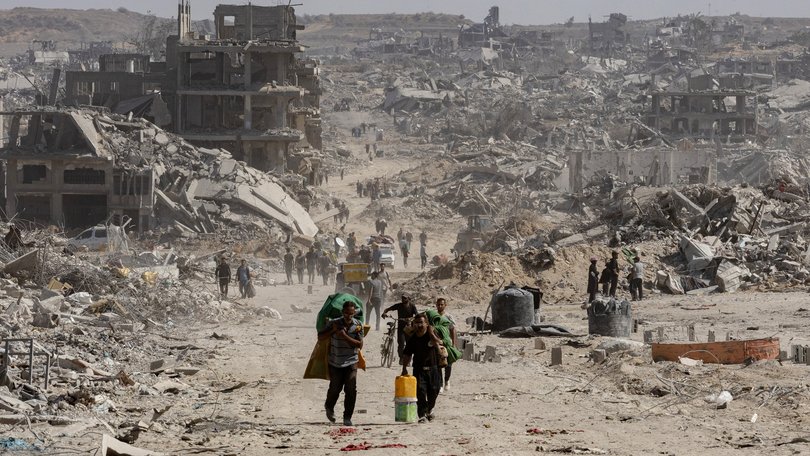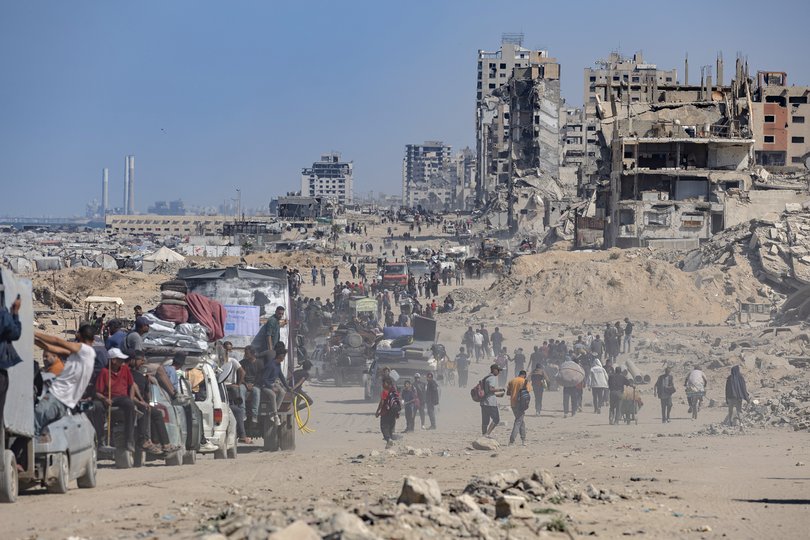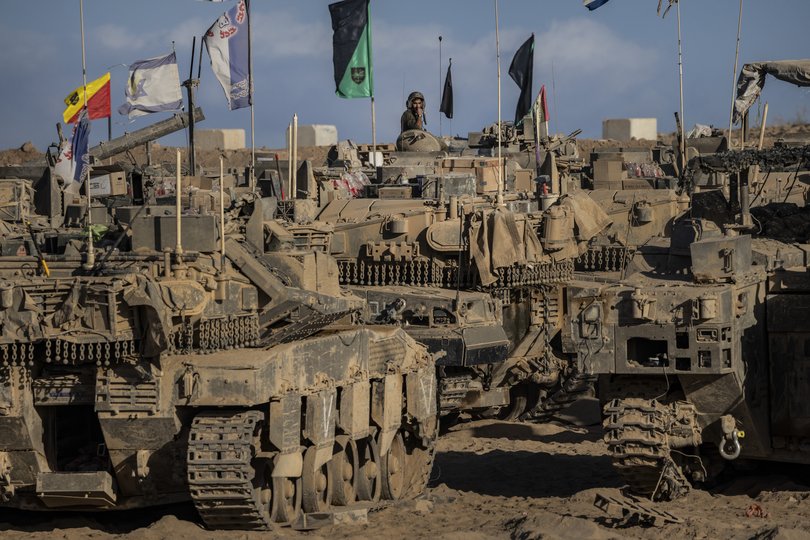Thousands return to Northern Gaza, hopeful, but faced with devastation

Thousands of people travelled by foot toward Gaza City on Saturday as a ceasefire held overnight, but early accounts described devastation across the area.
“The scale of destruction is really staggering,” said Olga Cherevko, a spokesperson for the United Nations’ humanitarian office, who visited the city this past week.
“We have a lot of people moving north to Gaza City and arriving to find the ruins where their homes used to be, so there is a lot of conflicted emotion.”
Sign up to The Nightly's newsletters.
Get the first look at the digital newspaper, curated daily stories and breaking headlines delivered to your inbox.
By continuing you agree to our Terms and Privacy Policy.Mediators hope the ceasefire, which began at noon Friday, will lead to the end of two years of war as the first phase of a 20-point peace plan presented in September by President Donald Trump.
In the Gaza Strip, joy at the pause in fighting has been tempered by the scale of destruction that many face as they return to the north. Hundreds of thousands of people fled Gaza City last month as Israel began a ground offensive there.
“We’re back in our city, but it doesn’t feel like it,” said Manal Muftah, 33. “We lost everything.”

She said she was a baker before the war and hoped to rebuild her business if the ceasefire turned into lasting peace. But the day when things would return to how they were before the conflict “still feels far away,” she said.
“Maybe our grandchildren will see Gaza rebuilt,” Muftah said. “Whoever lives long enough will see it — the Gaza we remember.”
Mahmoud Bassal, a spokesperson for Gaza’s Civil Defense emergency rescue service, said Saturday that 63 bodies had been recovered in the streets of Gaza City since the ceasefire began. He said he believed dozens more were probably under the rubble.
The director of Shifa Hospital in Gaza City, Dr. Mohammad Abu Salmiya, said the health care system would face “severe shortages” and “immense” challenges as people returned to the city. “We’ve finished one war and entered another,” he said.


Gaza is in a deep humanitarian crisis, with widespread hunger, vast destruction of property and most of its 2 million people displaced repeatedly in two years of war.
The territory was impoverished before the war, and food supplies and other aid have been sharply curtailed since the conflict began, making circumstances much worse.
The agreement reached Thursday between Israel and Hamas contains stipulations for an increase of aid into the enclave.
Israel will allow the United Nations to deliver larger amounts of humanitarian aid into Gaza starting Sunday, according to a senior U.N. official who spoke on the condition of anonymity to discuss the plans.
The United Nations has said about 170,000 metric tons of food, medicine and other supplies are staged and ready to be transported.

The truce reached this past week describes an exchange of hostages and prisoners, and says Israeli troops would partly withdraw to new deployment lines inside the territory.
But it does not address some of the key stipulations in the plan presented by Trump in September, including whether Hamas will agree to disarm.
Mr Trump nevertheless told reporters Friday that he believed there was “consensus on most” of the plan and that the hostages would be released Monday.
“They’re getting them now,” he said. “They’re in some pretty rough places. Only a few people know where they are in some cases.”
Mr Trump was expected to visit Israel’s Parliament in Jerusalem on Monday, according to a spokesperson for the chamber.
On Saturday, the Israeli military said its chief of staff had taken US Mideast envoy Steve Witkoff and Jared Kushner, Mr Trump’s son-in-law and former adviser on the region, on a field tour of Gaza.

For many of those walking the coastal road from southern to northern Gaza, the pause in fighting offered a chance to return home and to learn what remained of their lives there. For some, the experience was sobering.
“Today I feel nothing,” said Maisoun Wadi, 36, as she sat on the side of the road among a heap of bags, household items and a scrap of tarp. “Not sadness, not joy — just emptiness.”

She was shocked to see how much the city had changed since she and her family fled weeks ago.
“It was already destroyed, but what I see now is worse,” she said. “We have no house. I’ll tie this tarp to any standing wall and hang a blanket for a roof.”
The most pressing question for her was how to survive.
“I don’t care what’s agreed on in Egypt,” she said. “I care about a tent, about water.”
This article originally appeared in The New York Times.
© 2025 The New York Times Company
Originally published on The New York Times
